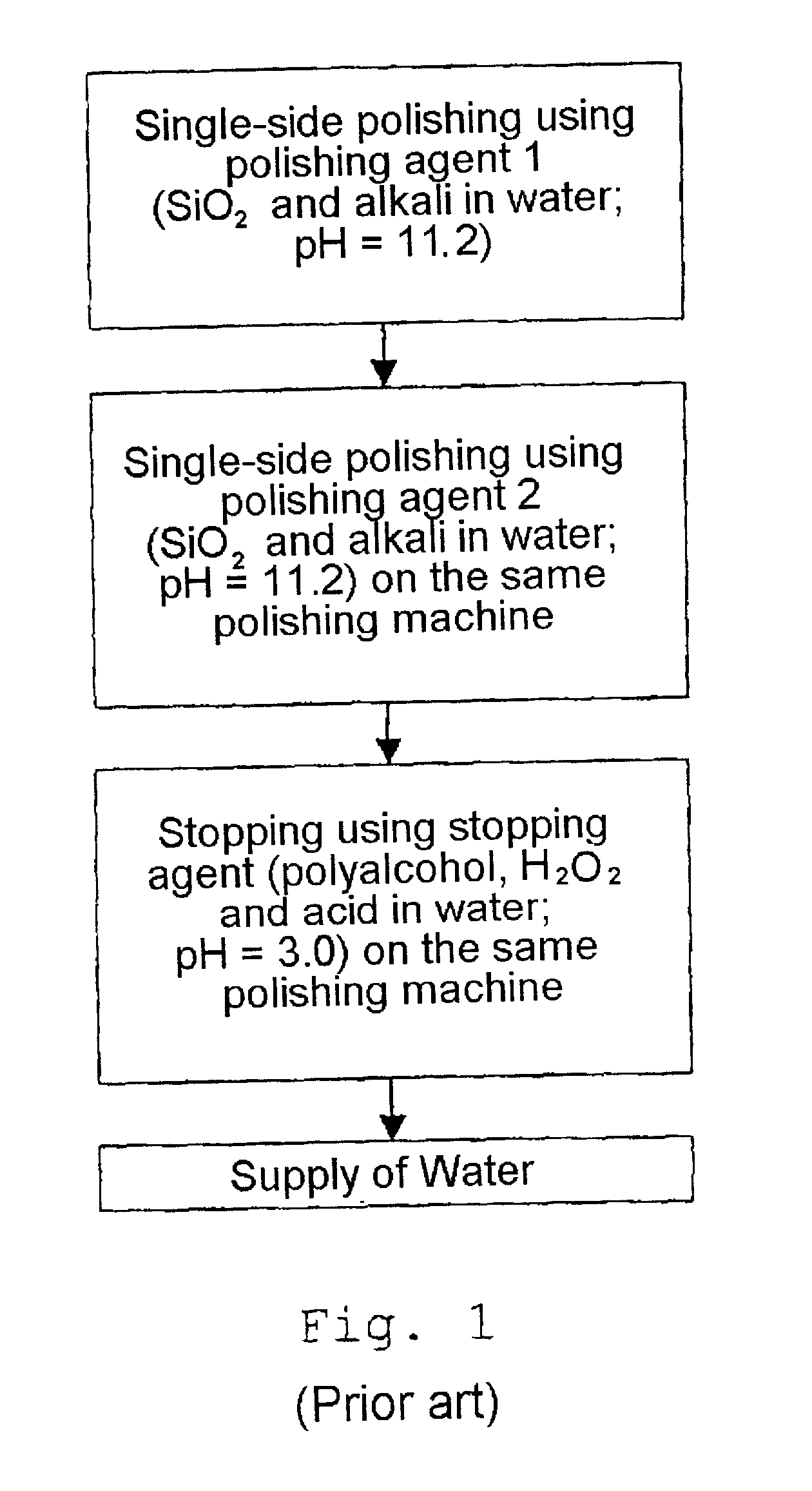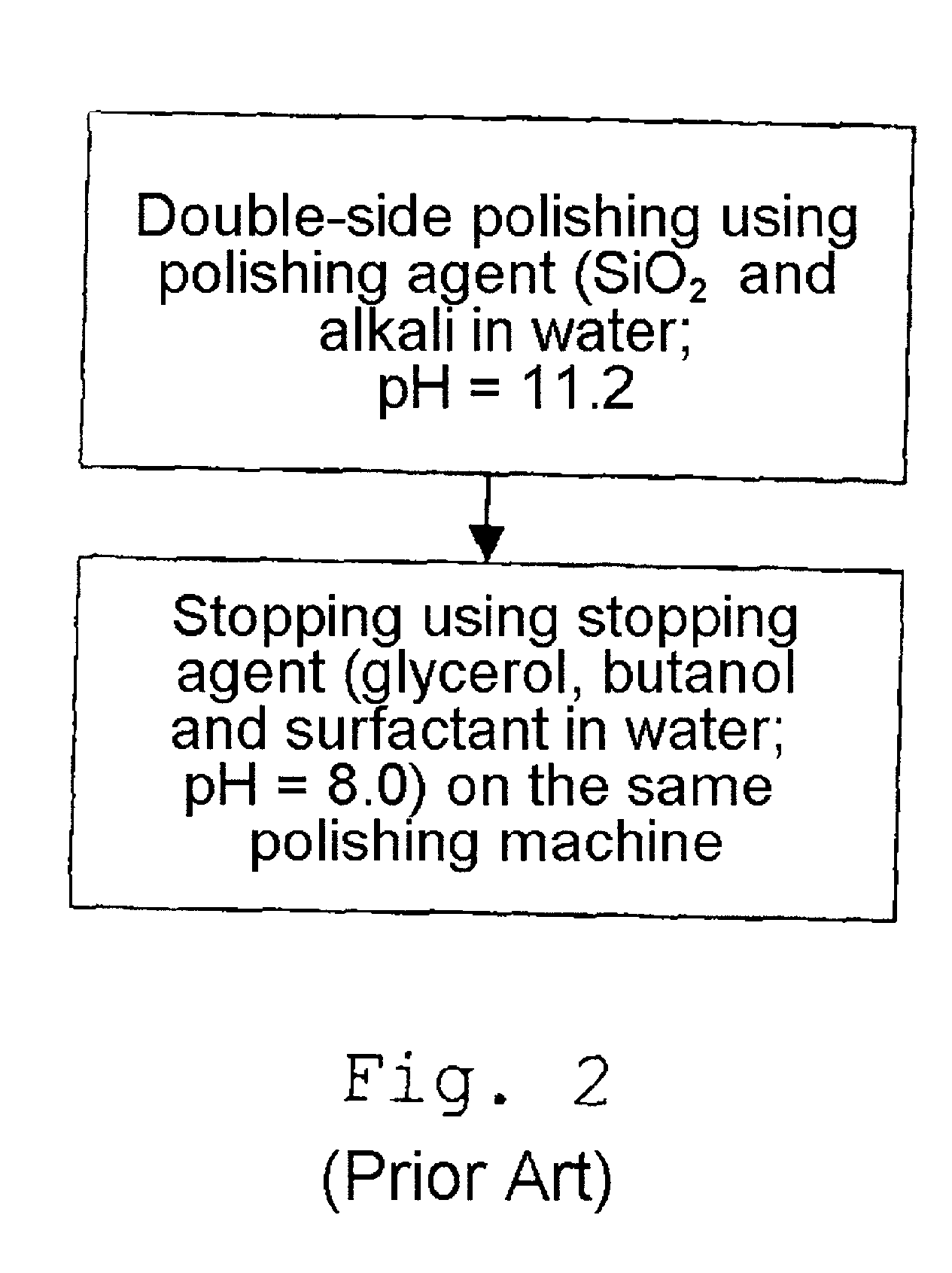Process for polishing silicon wafers
a technology of polishing process and silicon wafer, which is applied in the direction of polishing compositions with abrasives, grinding machines, electrical appliances, etc., can solve the problems of uneven surface of polished silicon surface, inability to deposition epitaxial coatings, and inability to direct further processing of polished silicon surfa
- Summary
- Abstract
- Description
- Claims
- Application Information
AI Technical Summary
Benefits of technology
Problems solved by technology
Method used
Image
Examples
invention
EXAMPLE (INVENTION)
[0039] The procedure was as described in the Comparative Example, except that between the polishing step and the stopping step, with the rotary conditions maintained, a further stopping step followed by a brief feed of ultrapure water, both at a pressure of 0.03 bar, was added. The corresponding stopping agent 1 comprised an aqueous suspension of pyrogenic silica (SiO.sub.2 particle size 30-40 nm; solids content 1.5% by weight; NH.sub.40H-stabilized), to which 0.3% by volume of triethylene glycol was admixed and which had a pH of 9.7. Therefore, to stop the polishing process, the liquids listed below were supplied sequentially: (1) stopping agent 1 (SiO.sub.2 / triethylene glycol in ultrapure water; 3 min); (2) ultrapure water (2 min); (3) stopping agent 2 (glycerol / butanol / surfactant in ultrapure water; 2 min). The silicon wafers produced in this way were likewise substantially free of scratches, haze spots and localized light scatterers.
[0040] Determination of the...
PUM
| Property | Measurement | Unit |
|---|---|---|
| Fraction | aaaaa | aaaaa |
| Percent by mass | aaaaa | aaaaa |
| Percent by mass | aaaaa | aaaaa |
Abstract
Description
Claims
Application Information
 Login to View More
Login to View More - R&D
- Intellectual Property
- Life Sciences
- Materials
- Tech Scout
- Unparalleled Data Quality
- Higher Quality Content
- 60% Fewer Hallucinations
Browse by: Latest US Patents, China's latest patents, Technical Efficacy Thesaurus, Application Domain, Technology Topic, Popular Technical Reports.
© 2025 PatSnap. All rights reserved.Legal|Privacy policy|Modern Slavery Act Transparency Statement|Sitemap|About US| Contact US: help@patsnap.com



